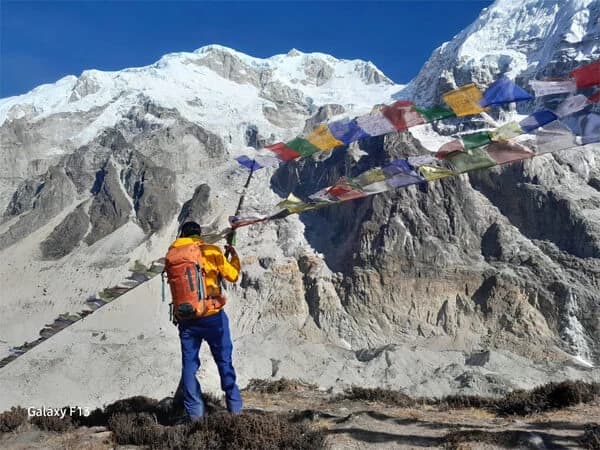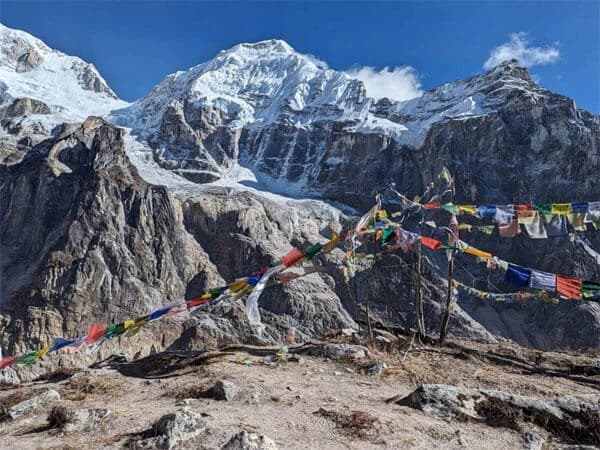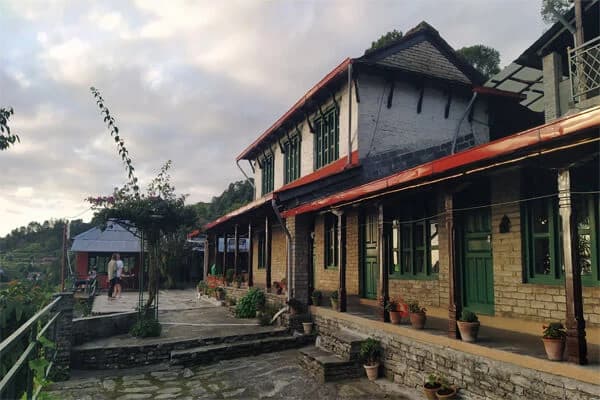If you're looking for an adventure tour in Nepal, look no further than the Kanchenjunga Trek. This route offers everything from lush green valleys to snow-capped peaks and is considered by many to be the best way to explore this majestic mountain. If you're interested in embarking on this journey, keep reading for information on how to get started!
Our Kanchenjunga base camp trek is a lovely 19-day holiday in Nepal's east, with 19 days of actual walking taking you 220 kilometers through varied stunning scenery including lush tropical jungle, chestnut, and oak woodlands, and high up to the glaciated base camp of the third highest peak in the world.
The daily number of visitors to Kanchenjunga is limited, therefore you'll need a local guide and at least two trekkers with the proper permits to go on the journey.
This trek visits both of the base camps on the north and south sides of the peak, with small groups of people seeking custom dates; we provide expert guidance and preparation for the journey to trekking in Nepal, as well as a high level of professionalism and attention to detail.
The trek up to Kanchenjunga Base Camp goes via the Arun Valley, which is one of the most beautiful Nepal trekking destinations and home to one of the country's defining natural areas, the Kanchenjunga Conservation Area. Here is the ultimate guide to Kanchenjunga Base Camp Trek.
Overview of Kanchenjunga Trek
These are for safety and assisting people over short rocky sections. However, there are no climbing skills needed for the trek. The most common approach to get started with planning your trekking route is by starting at our base camp, located at the foot of Mount Kanchenjunga.
The Nepal Trekking Routes is a popular choice for those who are looking to experience the beauty of Mount Kanchenjunga. There are several different routes available depending on what exactly you're looking for out of this adventure, but all will take you through some spectacular scenery along the way!
Despite its stunning natural beauty, the Kanchenjunga region has remained off the map for most trekkers due to its remoteness and lack of infrastructure (until recently it was only camping).
Teahouses have sprouted up in recent years in the villages and other suitable areas along the route. As a result, small groups may now visit here more inexpensively and money sent directly to the local economy is no longer required for accommodation and food expenses.
A trek through this area takes you into beautiful, low-lying valleys and up to towering forests and glaciers at the base of Kanchenjunga. You'll pass through Hindu and Buddhist villages where Chhetri, Rai, Limbu, Gurung, Sherpa, and Tibetan customs are practiced.
Although the trails are narrow, and the teahouses basic, relatively few trekkers go to this inaccessible area. On popular trekking paths, you won't find the fine dining and attached bathrooms that you would get on other trips, but you will see genuine Nepal in all of its diversity of cultures and natural wonders.
The most popular trek is 19 days long and includes both the North and South Base Camps of Mt. Kanchenjunga. However, there are several shorter alternatives available as well.
SUMMARY OF KANCHENJUNGA BASE CAMP TREK Itinerary
The trek begins at Taplejung, which is a 45-minute flight from Kathmandu to Bhadrapur and then a 4WD vehicle to Birtamod. Then we proceed to the northern base camp first on the extensive route.
- Days 1 - 3: Arrival in Kathmandu, rest, then fly to Biratnagar and drive to trek start
- Days 4 - 24: Trek up to Kangchenjunga base camps
- Days 25 & 26: Travel back to Kathmandu, spare day and depart for home
The walk around Mount Kanchenjunga takes in both the North and South Base Camps. The trip begins by climbing to the Northside of Kanchenjunga, where you'll have stunning views of Tent Peak, Nepal Peak, and Cross Peak before most of Kanchenjunga reveals itself.
The trek goes back to Ghunsa on the north side and then crosses Mirgin La Pass, which leads to the south side of Kanchenjunga. From there, you follow Ramche and Oktang's spectacular views of the southwest face of Kanchenjunga until you reach this pass.
There is only one major route and you may go in either direction, seeing both base camps (24 days) or one of the base camps (18/19 days) or completing a shorter circuit (about 15 days depending on your stops).
The Kanchenjunga trekking route is a popular choice for those who are looking to experience the beauty of Mount Kanchenjunga. There are several different routes available depending on your fitness level, however, most people will opt for the standard route which begins in Kathmandu and continues through to Base Camp II (Base Camp III is also available if you wish).
The first leg of this trip takes us from Kathmandu via a local bus past Thamel Gate towards Sarangkot/Pokhara. After a few days of acclimatization in Pokhara, we'll take a short flight to Taplejung and commence our trek.
LENGTH AND TERRAIN OF THE KANCHENJUNGA BASE CAMP TREK
The Kanchenjunga trek is long (220 kilometers) and challenging, with a heavy pack and three weeks of walking at a moderate pace. The area is typically rugged, with rocky pathways and some lengthy slopes, and a few spots around the base camps may need short ropes to help you cross the rocky ground. These are for safety and assisting visitors over short rocky stretches. The trek, on the other hand, does not require climbing expertise.
The mountain routes are simple to follow; at first, they follow the streams and valleys, then rise steeply up ridges and shoulders, with harsh stairwells and zigzags uphill. Being fit and having good boots, as well as being customized to trekking in Nepal for several days with a pack, are desirable characteristics in this region.
Walking for long periods at a time, wearing a backpack while going on lengthy walks, and doing some leg exercises in the gym with swimming for cardiovascular fitness are all reasonable starts. Because this is such a long journey, obtain a health and dental checkup before departure.
When approaching Base Camp, the higher altitude makes walking more difficult and increases the risk of altitude sickness, so take rest days and walk slowly. Because of the altitude and the time of day, the trip will vary in temperature considerably. The nights will be chilly in the mountains between 1,000 and 3,500 meters, generally about 5 degrees Celsius. During the day, temperatures can reach up to 25 degrees Celsius.
At higher elevations, temperatures fall between 15°C and -20°C at night, so you'll need a variety of clothing to keep warm and protected from the cold and the sun.
ACCOMMODATION ON THE KANCHENJUNGA BASE CAMP TREK
Lodges offer both Western and Nepalese cuisine for your stay. The lodging areas on this trek will be less luxurious than those in the Khumbu Valley, and they'll probably only serve Nepalese cuisine, which means lots of rice and dal bhat.
We recommend using boiled water on the trek or good-quality water purifiers, and we do not recommend acquiring bottled water in plastic bottles. The itinerary is meant to assist with proper acclimatization, and we need to keep a First aid box on hand to treat high-altitude sickness. The greatest advice is to take it easy, eat properly, drink correctly, and sleep enough. No vaccines are required for visits to the Kanchenjunga region
Conclusion: Kanchenjunga Trek
The Kanchenjunga Trek is an amazing 26-day holiday that offers rewarding trekking through lush, low-lying valleys and up into incredible forests and into the high alpine pastures and glaciers at the foot of Kanchenjunga.
This trek visits both base camps on the north and south sides of the mountain, making it a great option for those who are looking to experience this beautiful area in Nepal.
Reaching an altitude of over 5000 meters, this is without a doubt one of the most challenging and rewarding treks in Nepal! The trekking route is a popular choice for those who are looking to experience the beauty of Mount Kanchenjunga.
There are several different routes available depending on your fitness level, however, most people will opt for the standard route which begins in Kathmandu and continues through to Base Camp II (Base Camp III is also available if you wish).
The best months to trek to the Kanchenjunga region are March, May, and November. We recommend visiting the area from early March through mid-May and from October through late November.
During the winter, many locals will move to lower elevations and teahouses will close, leaving just camping as an alternative. It will be extremely chilly. In the spring, when the Rhododendrons bloom, you can witness an amazing spectacle of color as various hues blossom on different plants.
Buses are available, and they're much cheaper, but only those with the time to wait for a long bus journey through eastern Nepal and the connecting transportation (bus or jeep) up into the hills can take advantage of them. Pack your bags get ready for this spring and take the Nepal trekking challenge. Make sure you make a lot of memories.







